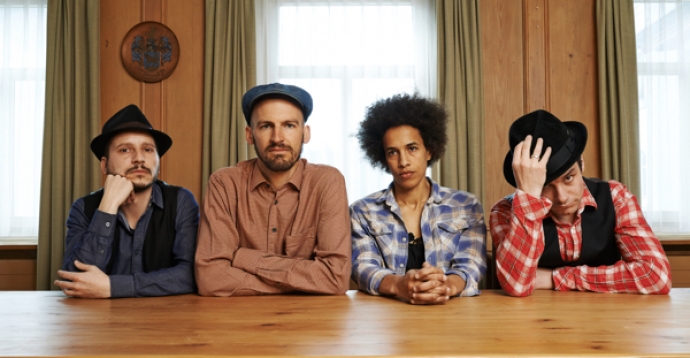Release
Print, Radio, TV, Online
Authenticity is important, but so is ambivalence. It's sort of a game to me. It’s important to have respect towards for the original material, to know its roots, and not to just have a picture of it which was crafted by todays’ music industry. At the core of it all is my own approach to things. It’s about being subversive, authentic and ambivalent at the same time. This gives the listener the possibility to find their own interpretation of our music. – Urs Voegeli
People tend to ascribe special properties to the number seven. Some call it magical, others holy, most just consider it plain lucky. One factoid that became widely accepted is that every 7 years the human body undergoes a full makeover, a rebirth of sorts – having every one of its atoms and cells replaced. The reality of the matter might be questionable, but the poetry at the heart of the myth will never be snuffed out.
Now, what’s this got to do with the crossover Jazz mavericks known as Ghost Town? Well, after seven years spent humanising and resuscitating Techno and contemporary Pop hits, the group decided to veer off into old-time American classics. With their third full-length offering entitled “No Depression in Heaven”, they dug out a slew of regional, American hits – most of which were penned in the late 1800s and early 1900s – and gave them a full makeover. In the process they also upgraded from an instrumental trio formation to a vocally driven quartet, by adding the extremely unique and versatile vocalist Joana Aderi to their line up.
Ghost Town

All the members of Ghost Town are seasoned Jazz musicians who, for different reasons, decided to apply their skills to anything but, what would be considered traditional Jazz. Their feeling for groove and extremely high musical aptitude shows in their improvisational fluency, the immediacy of the sound and a natural sense for pulsating polyrhythms. At times, the material found here hinges on something of an afro-beat-esque swing, while simultaneously redefining the parameters of a traditional, “roots” American twang. If that wasn’t enough, the whole thing is layered with a patina of textured, percussive, liquid electronics. To call this anything but an original Ghost Town sound might prove to be quite a challenging feat.





